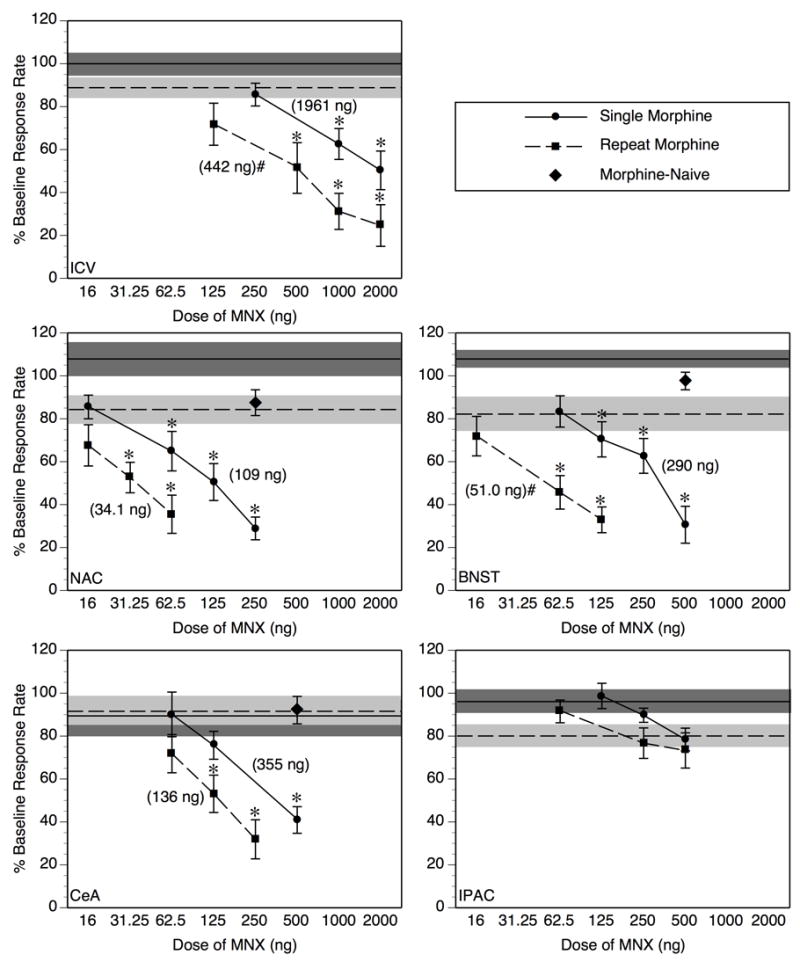Fig. 2.

Following an acute treatment with 5.6 mg/mg morphine (Single Morphine, circles + solid lines) MNX dose-dependently suppresses operant responding for food after injection into the lateral ventricle (ICV), nucleus accumbens (NAC), bed nucleus of the stria terminalis (BNST) or central amygdala (CeA), but not the interstitial nucleus of the posterior limb of the anterior commissure (IPAC) (*p < 0.05 vs. vehicle-infused group under the corresponding morphine treatment condition (Single compared to Single, Repeat to Repeat). After 4 morphine treatments at daily intervals (Repeat Morphine, squares + dotted lines), the magnitude of response suppression elicited by MNX was further potentiated with ICV, and intra-BNST infusions, but not with intra-NAC or intra-CeA infusion (#p < 0.05, significant shift in MNX dose-effect function from Single to Repeat Morphine condition according to relative potency analysis, see Table 2 for further details of this analysis). In Morphine-Naive subjects (diamonds), MNX at the highest dose tested within active brain regions (NAC, BNST, CeA) failed to suppress operant responding relative to vehicle-infused controls. Individual data points on the MNX dose-effect functions represent mean ± SEM percent of baseline response rate. Values in parentheses are the ED50 values derived for the corresponding dose-response function. The solid horizontal line represents the mean of the group infused with vehicle 4 hr after Single Morphine Treatment, and the dotted horizontal line represents the mean of the Repeat Morphine vehicle-infused group; the shaded region around each horizontal line represents ± 1 SEM. N = 8–11/dose group.
